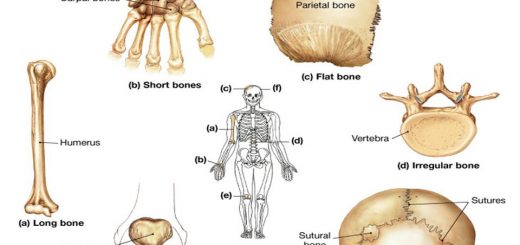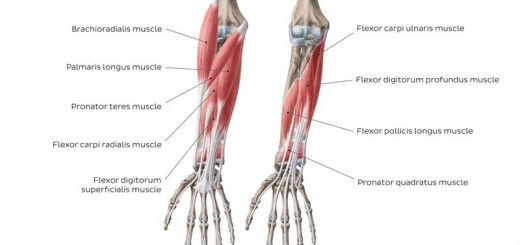Development and Abnormalities of the face, palate, tongue and Nerve supply of face processes
The face is the “organ of emotion,” and we read facial expressions to understand what others are feeling. The face contains other powerful clues. It is one of our most important possessions, the face provides vital clues to our own feelings and those of the people around us. It is an important channel of identity; friends and acquaintances can recognize us before a word is said.
Development of the face
The face is developed from five processes:
- The maxillary processes (2 in number, originated from the first branchial arch). These processes are found lateral to the primitive mouth.
- The mandibular processes (one on each side, originated from the first branchial arch). These processes are found caudal to the primitive mouth.
- Fronto-nasal process formed by proliferation of the mesoderm ventral to the brain. This process forms the cranial border of the primitive mouth.
Nerve supply of the processes
- The frontonasal process is supplied by the ophthalmic nerve.
- The maxillary processes are supplied by the maxillary nerve.
- The mandibular processes are supplied by the mandibular nerve.
Developmental stages of the face & palate
- The ectoderm on both sides of the frontonasal process will form local thickening. This thickening is called nasal placode.
- The nasal placode invaginates the underlying structures, and hence this placode will transform into the nasal pit.
- The nasal pits divide the lower part of the fronto-nasal process into the lateral nasal process (lies lateral to the nasal pit) and medial nasal process (lies medial to the nasal pit).
- The fronto-nasal process will form the bridge of the nose: the medial nasal processes will form the tip of the nose and the filtrum of the upper lip, while the lateral nasal processes will form the alae of the nose.
- The nasal pits are excavated to form the nasal cavities.
- The maxillary processes increase in size and grow medially. They meet the medial nasal processes compress them towards the midline forming the so-called inter-maxillary segment.
- Finally, the maxillary process fuses with the medial nasal process.
- The maxillary process continues to grow so they meet at the midline and fuse with each other and burry part of the medial nasal process deep to them. The maxillary process will form the upper lip.
- The buried deep part will form the primitive palate.
- The lateral nasal process and the maxillary process are separated by deep groove called (nasolacrimal groove):
- Canalization of this groove leads to the formation of the nasolacrimal duct.
- This duct extends from the medial angle of the eye to the nose.
- The ectoderm of the maxillary processes and the lateral nasal processes will fuse together burring the nasolacrimal duct.
- This fusion leads to the formation of the upper part of the cheek and the maxilla.
- Fusion of the maxillary and mandibular processes leads to the formation of the lower part of the cheek.
The processes forming the face
- Forntonasa: Forehead-tip and dorsum of the nose-ala of the nose-upper eyelids and philtrum of the upper lip.
- Maxillary: Lower eyelids – upper part of the cheeks- lateral part of the upper lip- upper jaw.
- Mandibular: Lower lip- chin- lower part of the cheeks- lower jaw.
Abnormalities of the face
- Cleft upper lip (hare lip): most common congenital anomaly, more common in male, It is due to failure of fusion of the maxillary process and the medial nasal process.
- Oblique facial cleft: defect in the face extends from the medial angle of the eye to the upper lip. It is due to the failure of fusion of lateral nasal process and maxillary process. The nasolacrimal duct is exposed to the surface.
- Median cleft lower lip: it is a rare anomaly. It is due to the failure of fusion of the 2 mandibular processes.
- Macrostomia: due to arrest of fusion of the maxillary and mandibular processes.
- Microstomia is due to the excessive fusion between the maxillary and mandibular processes.
Development of palate
It has double embryological origins:
- The primitive palate is derived from the inter-maxillary segment of the fronto-nasal process.
- Secondary palate is derived from the maxillary process of the first branchial arch.
Stages of development
- Two shelves-like processes arise from the inner aspect of the maxillary processes.
- These processes are termed the palatine processes.
- They grow medially trying to meet and fuse with each other, they meet the tongue in their way, so they change the direction of growth.
- They grow backward. Then they grow medially above the tongue.
- They meet in the midline and the 2 palatine processes fuse with each other, and with the primitive palate.
- At the same time, the nasal septum grows down and joins the newly formed palate. The primary palate is represented by the incisive fossa.
- The anterior three-fifth of the palate will ossify forming the hard palate, while the posterior two-fifths give the soft palate.
Abnormalities of the palate
- Cleft palate: this is due to failure of fusion between the two palatine processes with each other, or with the primitive palate. This includes 3 types: Bifid uvula, Cleft soft palate, Cleft soft and hard palate. This anomaly may be associated with the cleft upper lip.
- Perforated palate: it is due to failure of fusion between the 2 palatine processes at a certain point at the midline.
Development of tongue
Embryological origin of the tongue:
- Embryological origin of the muscles of the tongue: They are derived from occipital myotomes. They migrate from the occipital region to the tongue, carrying with them their nerve supply (hypoglossal nerve).
- Embryological origin of the mucous membrane of the tongue: Two lateral lingual swellings and one median lingual swelling (the tuberculum impar) arise from the first arch. A second median lingual swelling (copula of Hiss) is formed by the second, third, and part of the fourth branchial arches.
Stages of development of the tongue
The proliferation of the mandibular processes of the first arch leads to the formation of two lateral lingual swellings and one tuberculum impar. They meet and fuse with each other to give the anterior two-thirds of the tongue or body of the tongue.
Since the mucosal covering of the anterior two-thirds of the tongue originates from the first pharyngeal arch. So its sensory innervation is by the mandibular nerve. The posterior third of the tongue originates from the proliferation of the second, third, and part of the fourth arch forming the copula of Hiss.
U-shaped sulcus will liberate the tongue from the floor of the mouth leaving the frenulum linguae attached between them. The swelling arising from the third pharyngeal arch will grow over that arises from the second arch; this means that it will bury it. In addition, the two lateral lingual swellings will bury the tuberculum impar.
Thus, the mucosa of the posterior third of the tongue is supplied by the glossopharyngeal nerve. The posterior third is separated from the anterior two-third by the sulcus terminalis. The extreme posterior part of the mucosa of the tongue is derived from the fourth arch so it is innervated by the internal laryngeal nerve of the vagus.
Correlation between development of tongue and its nerve supply
- Anterior 2/3 develop from the first arch and is supplied by the mandibular nerve and tympani (nerves of 1st arch).
- Posterior 1/3 develops from the second and third arches but it is supplied by the glossopharyngeal nerve and internal laryngeal nerves (nerves of the third arch). This is because the element of the third arch grows superficially over the element of the second arch and hides it.
Abnormalities of the tongue
- The bifid tongue is due to the incomplete fusion between the two lateral lingual swellings.
- The trifid tongue is due to abnormal elongation of the tuberculum impar. Thus it separates between the two lingual swellings leads to a tongue formed of three parts.
- Tie tongue (ankyloglossia) is due to the attachment of the frenulum ligulae to the tip of the tongue. This leads to defects in speech and protrusion of the tongue.
- Macroglossia (large tongue).
- Microglossia (small tongue).
- Aglossia (absence of tongue).
- Hemiglossia due to failure of development of one of the two lateral lingual swellings.
You can subscribe to science online on Youtube from this link: Science Online
You can download Science Online application on Google Play from this link: Science Online Apps on Google Play
Lymphatics of head and neck, superficial vessels, deep vessels & Abnormalities of branchial arches
Cranial nerves types, Facial, Vestibulocochlear, Glossopharyngeal, Vagus, Accessory & Hypoglossal
Triangles of the neck contents, Structure of Anterior and Posterior triangles of the neck
Facial muscles function, anatomy, arteries, veins, names & expressions
Skull function, anatomy, structure, views & Criteria of neonatal skull
Function of sensory nervous system, Histological structure of ganglia and receptors













